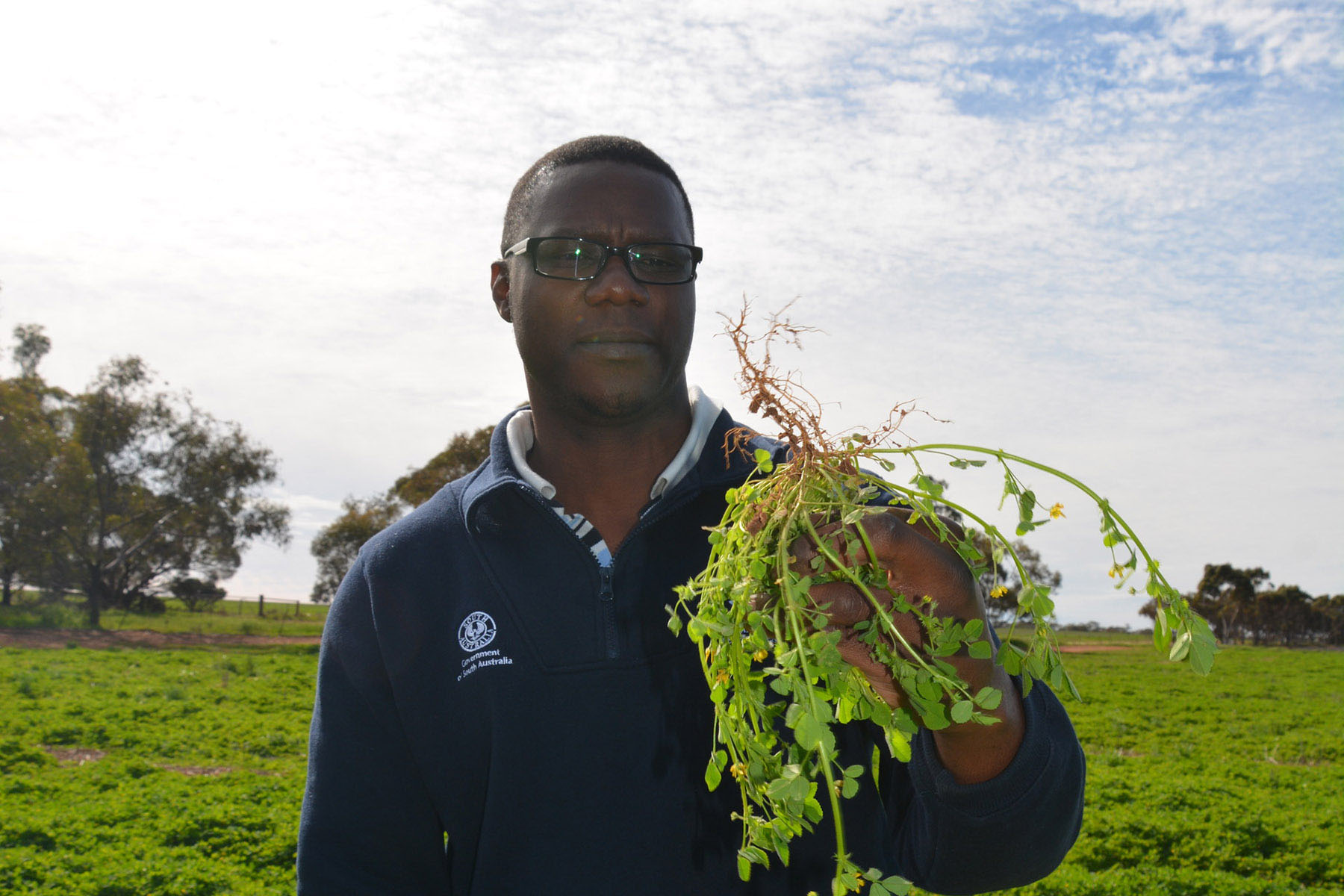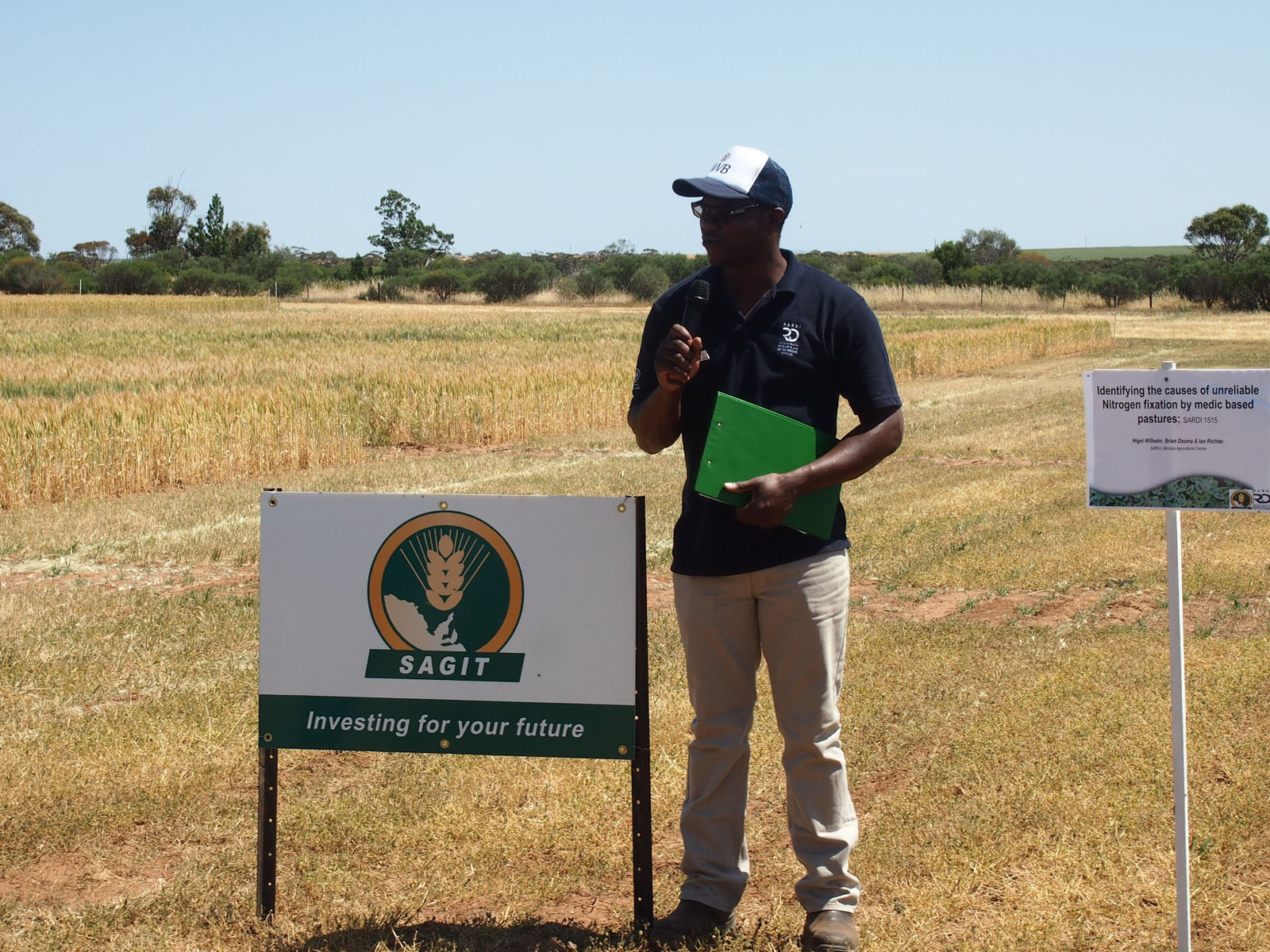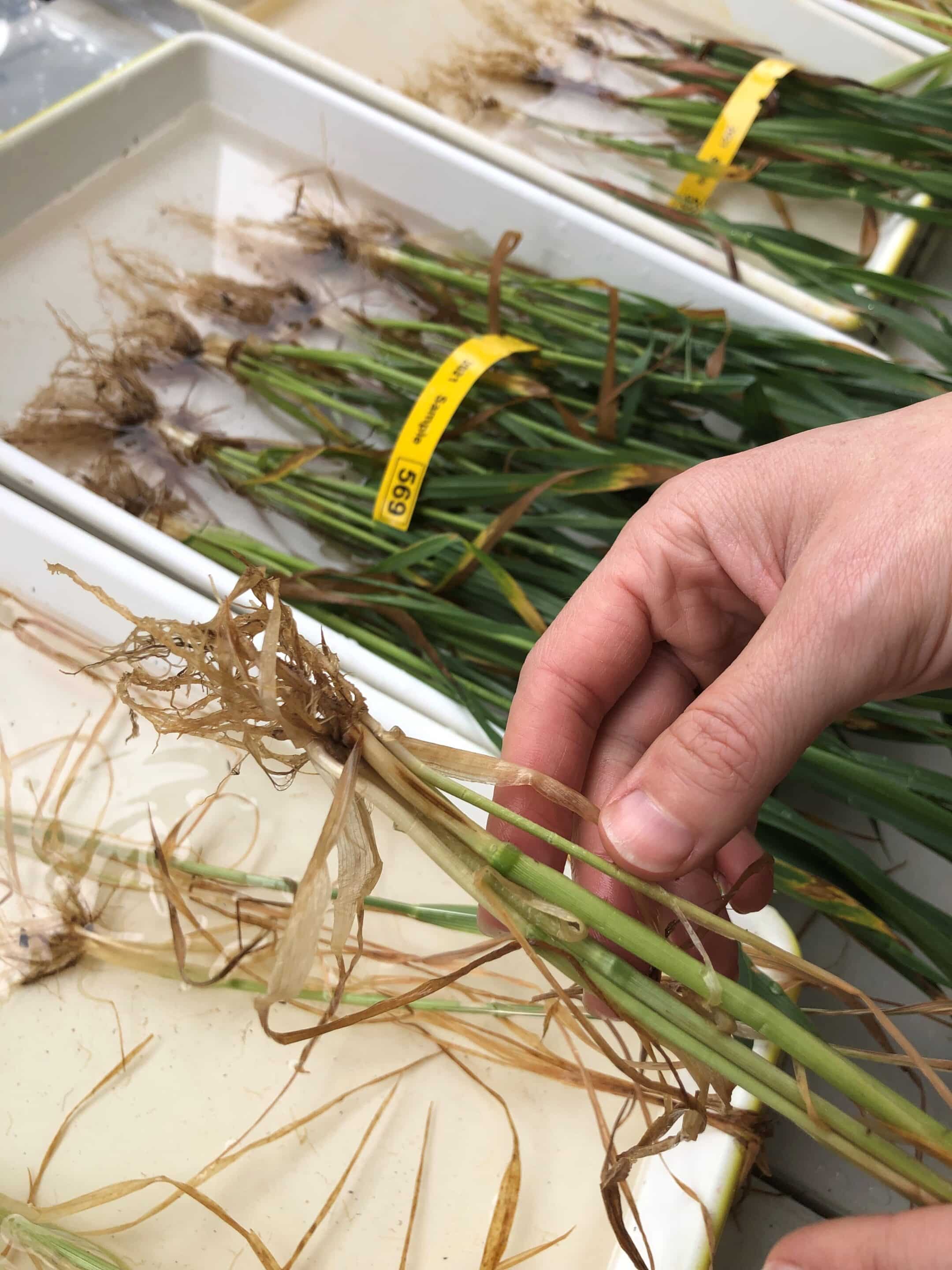START
FINISH

Summary
Low mineral N in soil following vigorous medic pastures on the Upper Eyre Peninsula have been found so this project delved into whether herbicides used for weed control on those medics were contributing to the uncertain N production.
It was found that the late application of herbicides commonly used for weed control in those pastures could be a reason for uncertain N contributions to the following crops.
Background
The Upper Eyre Peninsula is a region of high medic pasture production, but high N reserves were not necessarily present for the following season’s cereal crops. Unlike traditional ley systems, current medic pastures are often treated with a wide array of herbicides and pesticides.
Research Aims
The core objectives of the project were to:
• Assess the impact of current weed control chemicals, adjuvants and rhizobial inoculations on N fixation by medics under field conditions typical of the upper Eyre Peninsula and other low-rainfall Mallee systems.
• Assess the impact of nutrition – especially Nitrogen, Phosphorus and Zinc – on N fixation by medics under field conditions and note their effects on tolerance to current weed control chemicals.
In The Field
Over the course of the project, two field trials were conducted on the upper Eyre Peninsula in each of 2015, 2016 and 2017.
Two medic varieties, Herald and Angel, were grown in the first year, with only Herald grown in the subsequent years. One treatment in both trials was to treat the medic with a high rate of urea to simulate how medic would perform if sown into soil with high N reserves.
The trials were conducted on a grey calcareous soil and a red Mallee loam, with eight post emergent herbicide treatments, three chemical residue (CR) treatments and five nutrition treatments investigated in 2015.
In 2016, ten PE herbicide treatments, three CR treatments and four nutrition treatments were trialled, followed by six PE herbicide treatments, three CR treatments and five nutrition treatments in 2017.
Results
Among the project findings, it was discovered that one reason for uncertain N contributions from medic pastures was late application of herbicides that are commonly used for broad leaved weed control in these pastures.
Products like Agritone 750, when used at label rates, could stunt medic growth and reduce N fixation significantly.
The benefits of Phosphorus applications to medic growth and N fixation were reinforced and showed the value of sound P nutrition in optimising medic pasture performance.
Other findings included:
• Applying phosphorus to soil with low P reserves when establishing medic pasture can boost growth, improve root health and improve N fixation.
• Logran herbicide residues can severely stunt medic growth.
• The pasture production and N fixation of actively growing medic pastures will be reduced by full label rate application of Agritone 750 late in the growing season.
• Management practices that reduce medic biomass will in turn reduce N fixation.
• It is recommended to apply herbicides, if needed, on medic pastures early in the growing season.
• Nodulation in medic pastures can be reduced by the addition of urea at seeding (and high N reserves in the soil), hence decreasing N fixation.
Project Participants
SARDI: Nigel Wilhelm, Brian Dzoma, Fiona Tomney, Ross Ballard, Ian Richter, B Hay.
The Problem
Medic production can be prolific on the Upper Eyre Peninsula but it has been noted that high nitrogen reserves didn’t necessarily follow for the following cereal crops.
The research
Investigating whether common herbicides used for weed control in medic-based pastures contribute to the uncertain nitrogen fixation from pastures on the Upper Eyre Peninsula.
More information
Dr Nigel Wilhelm, SARDI
T: 08 8303 9353, M: 0407 185 501
E: [email protected]
Value for Growers
The preliminary results of the project were presented at Eyre Peninsula Farming Systems farmer meeting from 8 March to 17 March 2016, with a total of 126 attendees at Minnipa, Piednippie, Charra, Port Kenny, Lock, Cleve and Buckleboo.
Updated findings were again presented at EPFS farmer meetings in March 2017, with a total of 157 attendees at Minnipa, Wirrulla, Ceduna, Elliston, Warramboo, Rudall, Cowell and Buckleboo.
More findings were presented in March 2018 to a total of 141 attendees in meetings at Minnipa, Port Kenny, Charra, Piednippie, Warramboo, Rudall, Cowell and Kimba.
Results were presented at the annual Minnipa Agricultural Centre Field Days in 2015, 2016 and 2017 to a total of about 600 attendees. Results were also published in the 2015, 2016 and 2017 EPFS Summary, with 2017 results also published in the Mallee Sustainable Farming Research Compendium.
Latest Research Projects




